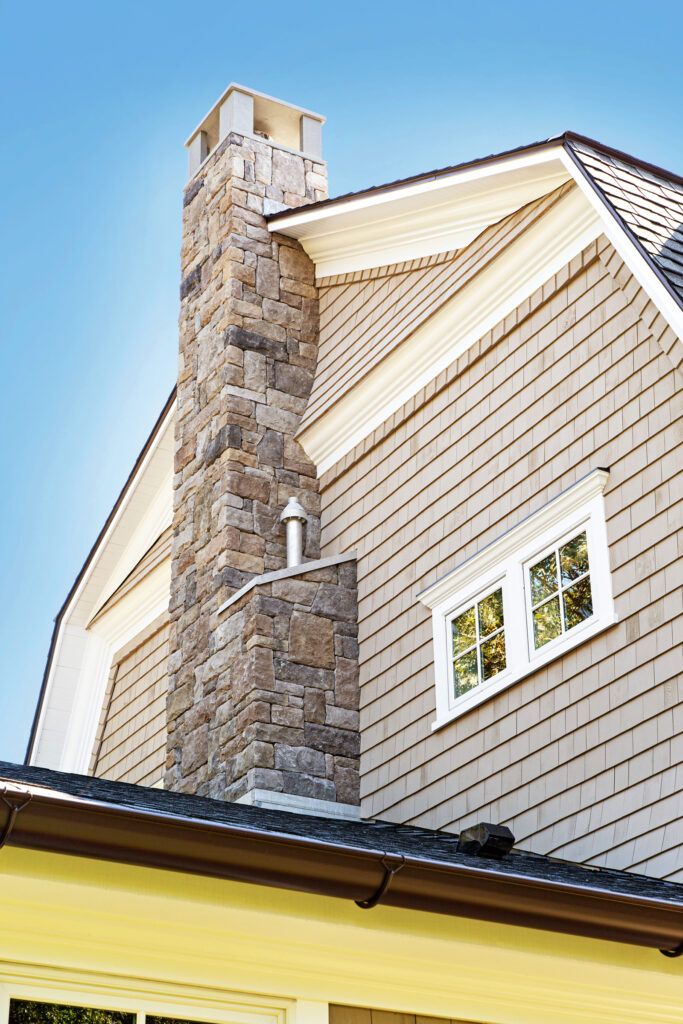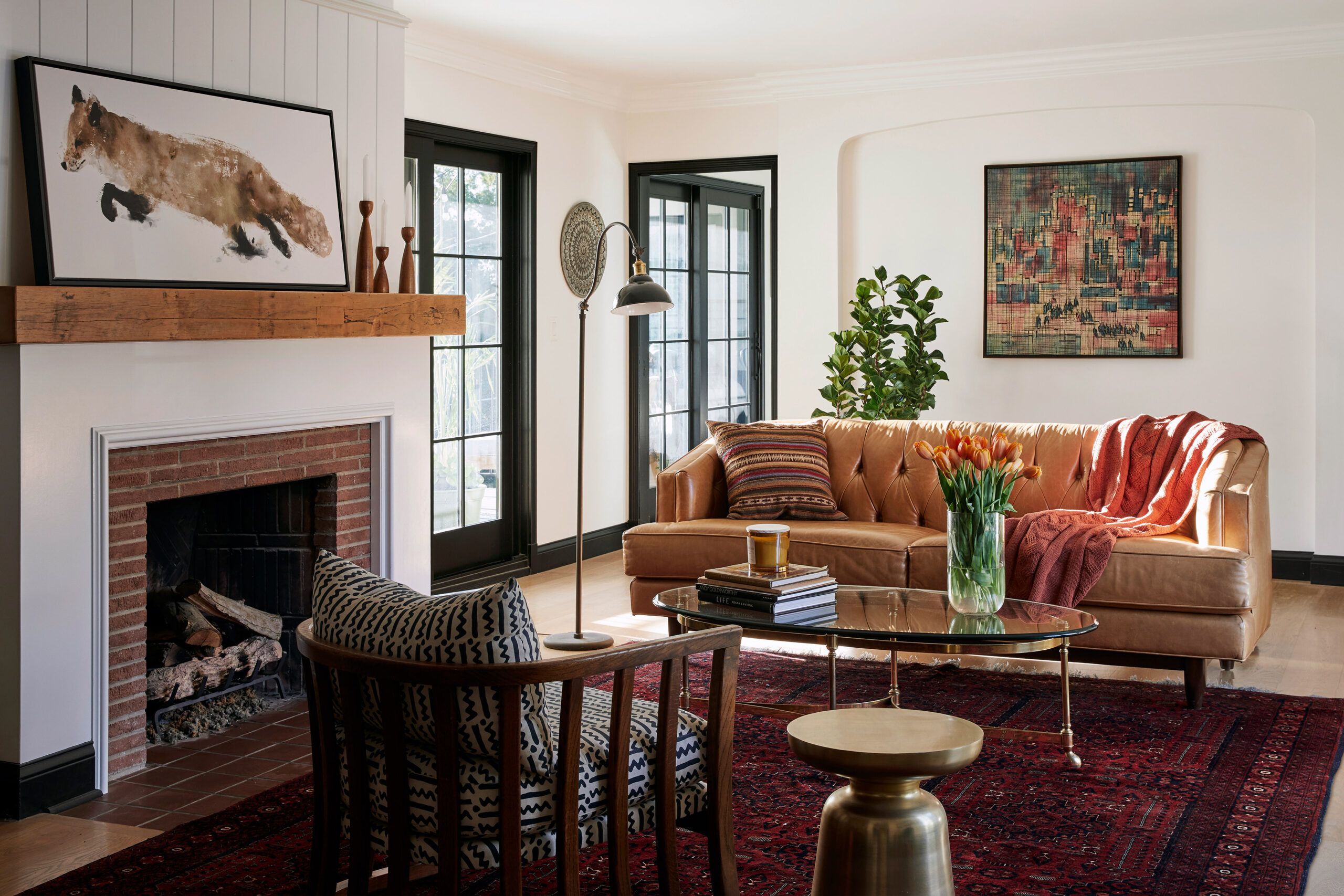As temperatures drop and winter approaches, many homeowners turn to their fireplaces for warmth and comfort. That’s especially true these days, as natural gas and propane prices continue to rise. However, before you light that first cozy fire, you should take a few steps to prepare. From annual inspections to selecting the right firewood, we’ll cover everything you need to know.
Hire a Chimney Sweep to Avoid Fireplace Issues
Creosote is a byproduct of burning wood that builds up in your chimney over time. It’s highly flammable and a very common cause of fireplace-related housefires, but it’s also one of the most preventable.
The National Fire Protection Association recommends hiring a professional chimney sweep at least once yearly, typically at the start of the winter season. These professionals can safely remove creosote, soot, and debris to give you peace of mind.
To find a qualified sweep in your area, consult the Chimney Safety Institute of America website.
Check for Damage to Your Fireplace
While the chimney sweep is doing their job, they’ll also inspect the structure for any signs of damage. Cracks, loose bricks, missing mortar, and a damaged chimney liner can lead to long-term damage over time, so it’s best to address them promptly to prevent more serious issues. You may be able to seal minor cracks yourself with a heat-resistant caulk.

Cap the Chimney to Protect the Fireplace
A chimney cap is fitted with wire mesh, covering the top to prevent rain and debris and deter birds and squirrels. Pests look for places to stay warm in the winter months, and the last thing you want is for them to find their way into your chimney. If your chimney cap is damaged or missing, replace it at the start of the cold season.
You can also use inflatable draft blockers alongside the chimney cap, which keep a tight seal to prevent heat loss. Remove it before you kindle a fire, and put it back when you’re done.
Test Your Smoke and Carbon Monoxide Detectors
Your smoke and carbon monoxide detectors are the first defense against potential fire hazards. Before you use your fireplace, test each one and replace the batteries if an alarm doesn’t sound. Install additional alarms near sleeping areas if you don’t already have them in place.
Burn Seasoned Hardwoods in Your Fireplace
Seasoned hardwood, like oak, maple, or hickory, are the best and safest types of firewood you can choose. This dense firewood has been split and stored in a dry place for at least 6 months. It also burns longer and gives off more heat than softwoods like pine.
Don’t use green or freshly cut wood for your fireplace. It contains high moisture content and produces more smoke and creosote.
Store Your Firewood Properly Near the Fireplace
Keep your firewood in a dry location so it won’t absorb moisture as easily. Covered outdoor racks and sheds work well to shield the wood from rain and snow while still allowing air circulation.
You’ll also want to stack the wood off the ground. This helps keep the wood dry and discourages pests from chewing away.
Prepare Kindling and Fire Starters for Your Fireplace
To make using your fireplace easier, prepare some kindling and fire starters in addition to your seasoned firewood. Use small, dry sticks and twigs that easily catch fire—when they burn, they can spread to larger logs.
For safety, never use gasoline, lighter fluid, or any flammable liquid to start or kindle your fireplace. You should also avoid using old paper, which can produce lots of ash and release harmful fumes from inks.
Build Your Fireplace Right
Don’t go overboard and build a large fire. A fire that is too large or hot can crack the chimney.
Smaller fires that are built gradually generate less smoke and creosote buildup, making them both cleaner and safer. To allow for proper air circulation, place logs toward the back of the fireplace on a metal grate.
Use Some Accessories for your Fireplace
The right accessories can make your fireplace both safer and more efficient. Try using the accessories on this list:
- Blower: Blowers help distribute warm air more effectively throughout your space.
- Fireback: This cast-iron plate sits on the back of the fireplace to reflect heat back into the room.
- Glass doors: These doors can help control airflow and prevent heat loss when the fire is out.
- Spark guard: Stop wayward embers from shooting out of the firebox with one of these mesh metal screens.
Keep Fireplace Accessories Clean
If your fireplace has a glass door, clean it thoroughly to improve heat reflection. Use a specialized fireplace glass cleaner or a mixture of water and vinegar. Clean the surrounding hearth and mantle as well, removing any dust or debris that may have accumulated in the summer.
You should also clean up your fireplace tools and accessories, such as pokers, tongs, and shovels. Wipe off soot and debris, and check for signs of wear and tear.
Set Up a Safe Zone Around the Fireplace
Keep flammable objects like furniture, curtains, and rugs at least three feet away from the fireplace, and teach children and pets to respect the boundary as well. The only exception to your safe zone should be a fire-resistant hearth rug to protect the flooring from stray embers and sparks.

